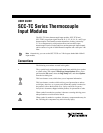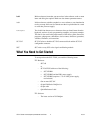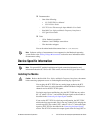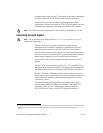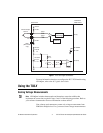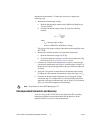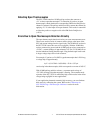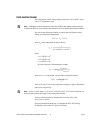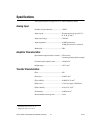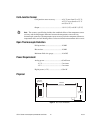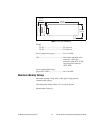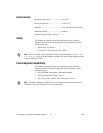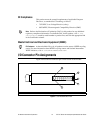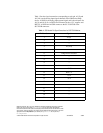
SCC-TC Series Thermocouple Input Modules User Guide 4 ni.com
the inputs of the second-stage SCC. An example of dual-stage conditioning
in an SCC-TC0X followed by an SCC-LP01 lowpass filter module.
Sockets J9 to J16 also are available for digital input/output (DIO)
conditioning or control. Refer to the SC-2345/2350 User Manual for more
information on configuring, connecting, and installing SCC modules
Note SCC-TC0X dual-stage configuration is only available in NI-DAQmx 7.1 or later.
Connecting the Input Signals
Note The signal names have changed. Refer to ni.com/info and enter rdtntg to
confirm the signal names.
The SCC-TC01 has a two-prong uncompensated thermocouple
miniconnector that accepts any miniature or subminiature two-prong
male thermocouple connector. The SCC-TC02 has a three-position
screw-terminal connector that accepts 28 to 16 AWG thermocouple wires.
The screw-terminal connector provides a ground connection for shielded
thermocouples. Otherwise, the two modules function identically.
To use an SCC-TC01, plug the male thermocouple connector into the
module.
The SCC-TC02 accepts up to three signals: TC+, TC–, and GND. TC+ is
the positive thermocouple lead and TC– is the negative thermocouple lead.
1
The GND terminal connects to AI GND on the E/M Series DAQ device.
The SCC-TC0X has a 10 MΩ bias resistor connected from the negative
thermocouple input to ground. This resistor allows the thermocouple to be
ground-referenced or floating without requiring external bias resistors
connected to ground.
The amplified thermocouple signal and cold-junction sensor signal
are measured by E/M Series DAQ device channel X and channel X+8
respectively, where X is 0 to 7 depending on where you plug the
SCC-TC0X. Refer to Figure 1 for SCC-TC0X signal connections.
1
For ANSI color-coded J-type thermocouples, the red wire is negative and the white wire is positive. Refer to the thermocouple
data sheet if possible. You can find information about other color-coding schemes in the NI KnowledgeBase at
ni.com/
support
.



